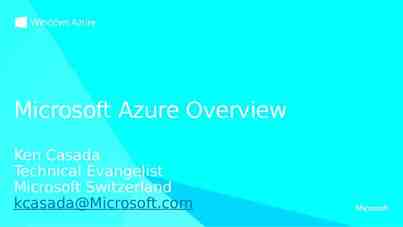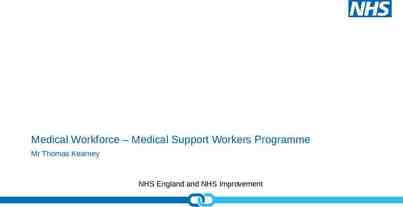Case Management: Making VACMS Work For You Monica Moore and
32 Slides7.27 MB
Case Management: Making VACMS Work For You Monica Moore and Morningstar Misa VDSS Benefit Program Trainers Spring BPRO May 2019
This presentation is designed to teach you how to utilize VACMS to ensure successful case management and help organize your office. Agenda: Case management Reports Scheduling Documentation DMIS Finishing Touches Handling Changes Organization Wrap Up/Q&A
Case Manageme nt What does case management mean to you?
Case Management “Case management is a collaborative process that assesses, plans, implements, coordinates, monitors and evaluates the options and services required to meet the client’s human services needs. It is characterized by advocacy, communication, and resource management and promotes quality and cost-effective interventions and outcomes.”
Skills Needed Responsibility Organization Delegation Time management Commitment Knowledge Resourcefulness Collaborating Decision-making
Caseload Management Tools
Reports How can reports help you manage your caseload?
Data Warehouse Reports Data Warehouse and FUSION MMIS: Monthly Renewals Due and Overdue Locality Active Enrollment Enrollee Eligibility Birth Date System Cancellation Reports VaCMS: MA Applications Processing Report Clients by Benefit Services Dashboards (MA, SNAP, and TANF) FUSION: MA: Application Metric Report MA Management Reports: Patient Pay Reports SNAP: Participation Report APPTRACK Report in the Web Based System Generic: Performance Indicators Monthly Reports (PIMR)
Reports: VaCMS TANF TANF/VIEW Clock Active TANF VIEW Cases with No Open VIEW Supplement SNAP Interims Due Claims Data SNAP ABAWD Statistics SNAPET Registrant Supporting Mass Change APPTRACK EAP Pending By Component Unpaid By Component MA Ex Parte Automated Run Generic Renewal Status Pending Point in Time DMIS Case/Alpha Listing Utilize the VaCMS Caseload Management Reporting Tools Guide found on the Fusion Page
Reporting Tools Guide on FUSION Quick Links VaCMS Learn More
Scheduling What does scheduling mean to you?
Scheduling Scheduling occurs daily, weekly, monthly, and sometimes even more infrequently Different tasks may be required at different intervals Daily should not only include interviews to be completed but scheduling other activities to allow for caseload management Such as: reports, processing changes, handling infrequent tasks such as training, unit meetings and time off Utilize the Benefit Programs Calendar sent out monthly and coordinate it with your other scheduling methods (Google or Outlook)
Scheduling: Daily Daily scheduling should include things in addition to processing, such as pulling voicemail and returning calls and emails Scheduling monthly and weekly tasks helps determine your daily schedule In the morning, review your daily schedule and organize for the day In the afternoon, see how far you’ve gotten in your daily schedule and shift the weekly schedule as needed In the evening review the next day’s schedule to be prepared Make sure to schedule breaks/lunch Make a checklist if it is helpful
Scheduling: Monthly and Weekly Monthly Weekly Set up interviews and regularly scheduled meetings Look at tasks due not only in the next month but two months ahead Take into account your leave and teammates’ leave Eventually these will show annual trends to note for upcoming years Review actions needed (processing deadlines, meetings, number of appointments and open spots Review multiple times to see if scheduling needs to be adjusted Schedule cutoff and system downtime as they occur Note items such as expedites, PG Women, APPTRACK updates and renewal processing
Using the Scheduler in VaCMS
Documentat ion What story should your case tell?
Documentation Documentation supports the eligibility determination made by the eligibility worker. Documentation must be clear, concise and to the point. There must be enough information so that any third party reviewer can determine the reason, logic, and accuracy of the worker's decisions and actions. Examples of actions required to be documented: Approval or denial of benefits including the denial reason Changes reported by the client which result in an increase or decrease of benefits. Discrepancies between information reported on the application and entered in VaCMS The inclusion or exclusion of information and why Change in household composition Significant client contacts (concerns or complaints from the client)
Documentation in VaCMS Does not have to only occur at the end of the case action Such as: phone calls as they occur and any other client contact, communication between Eligibility and Service workers Allows for anyone to pick up the case and know where you left off if you called out sick or they are completing the IR or renewal on your intake Include things such as if an application was associated to a case, the action you are taking and any follow up needed Helps to facilitate agency transfers to communicate to new eligibility or service workers Avoid duplicate documentation (such as paper evaluations) Documentation standards are listed per program and on the multi-program guide posted on the FUSION page
Documentation Guide on FUSION Quick Links VaCMS Learn More
DMIS Do you utilize your paperless case filing system?
DMIS as part of the case record Customers can upload documents through CommonHelp to review before sending a checklist Uploading documents keeps paper files to a minimum Allows for seamless transfer of cases between agencies Workers may upload documents received from customers in electronic formats Prevents loss of verifications Keeps work area clear and organized DMIS standards are on FUSION
Using Manually Generated Forms Forms/correspondence created in VaCMS become a permanent part of Forms History Prevents the need for forms to be scanned into DMIS
Finishing Touches What additional steps do you take to ensure your cases are complete?
Finishing Touches: Tasks/Reminders System generated according to policy rules Reminds you of important tasks that must be completed on cases at certain intervals 60 Days Postpartum Child turning 1, 6 or 18 years old Should be checked daily and cleared out regularly Can be used like a to-do list Can be set up manually to remind yourself of future actions that need to occur based on reported changes or other information
Finishing Touches: Other Steps Verify the correct information went over to other systems: EPPIC MMIS Verify all correspondence has generated correctly: Checklists and notices Do you need to locally print and add additional information? Do you need to suppress any correspondence? Was the case overdue or will the case show on APPTRACK?
How does case management change when you process case changes or experience change in your agency? Handling Change
Reported Changes Are customers truly aware of change reporting requirements? Could be addressed during interview and/or on Notice of Action Changes reported by other Agency staff Such as CPS, Foster Care and Child Care Certain changes can require additional follow up Such as: decrease in income causing increase in benefit and requesting pay verification if needed When reporting a change of address Offering Voter Registration and asking about shelter expenses Encourage clients to report changes through CommonHelp Check the changes and renewals inbox in My Workspace daily
Adapting to Change Be flexible and know that your day could change Look for opportunities outside of the agency for training If your daily schedule is leading to stress, look at adapting your weekly and/or monthly schedule Ask for refresher training when needed Benefit years tend to be cyclical; make note of busier months and less busy months to be prepared Find reasons to celebrate your personal and team successes
Using Announcements in VaCMS Workers with the proper security role may create announcements These may be viewed on the Dashboard of workers agency-wide to facilitate agency communication
Organization What resources do you have to keep you organized?
Organization Organization can mean organizing your time as well as your physical space Reports help to organize your workflow Scheduling helps to keep your time organized Tasks/Reminders help organize important tasks DMIS helps organize paperwork and files Work organization into your schedule so you can refresh and clean up your space on a regular basis Such as: always clean your work space at the end of each day and set up your work space for the next day’s activities Organize for absence; helps for scheduled and unscheduled absences Also assists your co-workers to follow your casework in your absence
Q&A/Wrap - Up You’ve made it! Don’t be afraid to ask Find a mentor Be sure to take time for yourself during the day Leave work at work





































